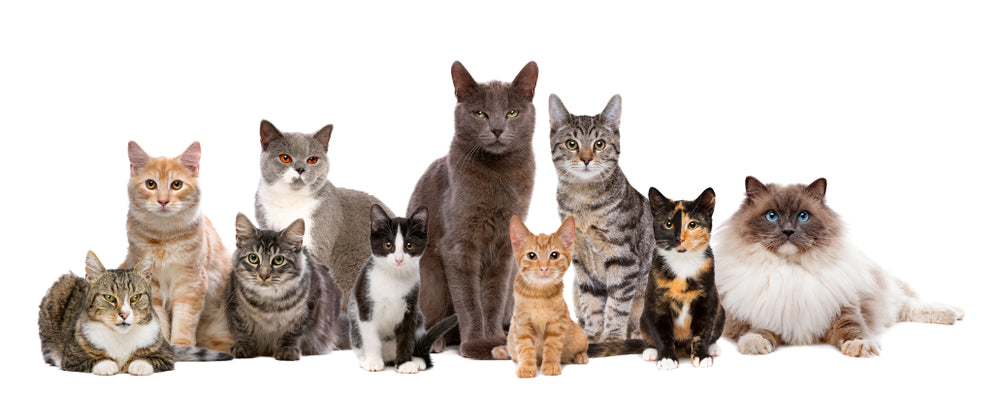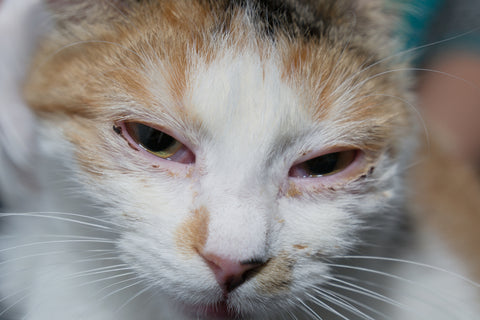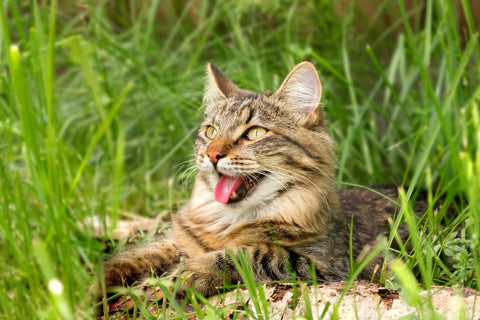
How can you tell if your cat is fully grown? Learn about cat life stages and developmental milestones that can help you find out whether or not your cat has grown to full maturity. Know when to make important decisions that will help you best support their health and well-being, such as whether your cat is ready for adult cat food or at what age they should be spayed or neutered.
At What Age Do Cats Stop Growing? Life Stages of Cats Explained
Knowing your cat’s growth and developmental milestones can help you meet your cat’s changing needs and support their health at every life stage.
Kitten (0-6 Months Old)
Kittens usually double in size during their first week of life. After week one, kittens gain an ounce approximately every three days. During this period is when your kitten will grow the fastest. In addition, your kitten's baby teeth fall out and their adult teeth come in which usually happens around the six-month mark.

On average, a cat reaches sexual maturity at about six months of age. At this time, the cat is capable of reproduction. The age at which a cat is spayed or neutered also affects their growth rate. Cats that are spayed or neutered early in life typically grow larger than a cat that wasn’t spayed or neutered until adulthood.
Junior (6 Months to 2 Years Old)
Although not all cats are finished growing at 12 months, most kittens stop growing during their first year of life. Although all cats are unique, transitioning your cat from kitten food to adult food is usually appropriate when your cat is around 10-12 months old. However, it is always good to consult your veterinarian about your cat’s nutritional needs.

Once your cat is two years old they are usually fully grown and have reached behavioral and social maturity. Playing with your cat helps them burn energy and increase their confidence and trust in you, their pet parent.
Prime (3-6 Years Old)
Your kitty is in its prime during this stage of the life cycle. This is when they are their healthiest and most active. You can help them remain that way by monitoring their weight. By this age, even the most rambunctious cats have started to settle down and typically require less supervision than younger kitties.

Mature (7-10 Years Old)
Cats this age are 40-50 years old in human terms. They tend to be less active than they were in their prime. To support their health, it is important to remain vigilant by monitoring for any changes in their behavior and visit your vet once a year for wellness check-ups.
Senior and Geriatric (11-14 Years Old)
During a cat's golden years, you may find that your kitty moves slowly and eats less, while sleeping more. Your older cat may experience problems with seeing and hearing as they grow old, which are among some of the many reasons that twice per year wellness check-ups are important for senior cats.
How To Tell When A Cat Is Fully Grown
Although not all cats are finished growing at 12 months, most kittens finish growing during their first year of life. Several factors influence the timelines for when a cat reaches maturity and is fully grown. Important considerations include gender, breed, diet, and whether the cat has been spayed or neutered.

Gender
Your cat’s gender plays a major role when determining if a cat is fully grown. If your cat is male, he will grow at a slower pace and continue growing later in life than female cats. Like all mammals, male cats are generally bigger than their female counterparts. Female cats begin puberty at a younger age than male cats. When male cats become sexually mature, they do not go into heat like females do, but they can spray. Both male and female cats can reproduce before they are fully matured, much like human teenagers during puberty.
Breed
Large breeds can take longer to reach full maturation. For example, bigger kitties like Maine Coons may not reach their full size until their second birthday. There’s only a 5-10 pound difference between the smallest and largest breeds of cats, which does not seem like much until you consider how relatively small domesticated cats are.
Diet
How you feed much and how often you feed your cat will change throughout its lifespan. The most important factor is to feed your cat a high-quality, species appropriate diet that provides them with adequate moisture and nutrients to support them at every life stage. Fresh, clean water is also important to provide daily.

A healthy diet, along with plenty of exercise and play will support your cat’s overall health and help prevent obesity—a common health condition seen in an estimated 60 percent of cats in the U.S. Consult your veterinarian if you have questions about your cat's diet.
Spaying or Neutering
When your cat reaches sexual maturity (typically around six months), you will want to discuss spaying or neutering with your veterinarian. PetMD provides some helpful information about what age you should spay or neuter your cat.
Get to Know Your Cat Better with Basepaws
Basepaws DNA tests give you a wealth of actionable information that helps you stay in control of your cat’s health. You want to know your cat—inside and out—and the Basepaws Breed + Health DNA test lets you do just that. Learn about your cat’s breed profile in relation to 21 different breeds. Gain insight on 25 genetic traits associated with your cat’s unique appearance and behavior, as well as potentially life-saving information about their blood type and likelihood of resistance to Feline Immunodeficiency Virus (FIV).

In addition to 43 genetic diseases, Basepaws screens your kitty’s oral health for their current risk of having periodontal disease, halitosis, and tooth resorption. These painful issues are difficult to see, and poor oral health puts your feline family at risk for heart, kidney, and other health conditions. Gain peace of mind with Basepaws and get ahead of diseases before they become advanced—so that your cat can live a better life, at every life stage.



